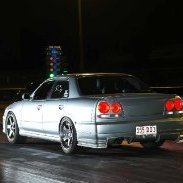Can I Run A Rb25 Turbo On A Rb20 Without A Tune?
Announcements
-
Similar Content
-
Latest Posts
-
By Dose Pipe Sutututu · Posted
Possibly avoid using a Cometic one unless the deck/head surface are perfectly flat. I did have a look just then and forgiving gaskets such as Tomei or Nitto don't exist for the FJ20, however the Bar-Tek or Kameari ones look good and might do the trick. -
Because pipe threads for pipe things. M threads for bolt things. Throw some teflon sealant onto it and dust your hands off knowing you did the right thing, instead of going twice around the block to achieve a result using the wrong things. Of course, all of these solutions are ignoring the fact that the minimum thread pitch we're talking about here is 1.25mm, with the 1/4" in NPT or BPS being out around 1.4mm. You will need to know that the boss you're tapping has enough thickness for at least a few threads. That's one of the reasons that 1/8" is commonly used - because the pitch is <1mm. And why would you look to use 1/4" NPT in a BSP country anyway? Ugh.
-
By Dose Pipe Sutututu · Posted
Just throwing around ideas, does it need to be in the compressor cover? Why not the hot side piping? -
1/8NPT drill size = 8.7mm. Since the hole got messed up by me, it’s probably around 9mm. So 1/4” NPT would be next step. A drill size of around 11mm would be preferred there which is not way of my M12 (drill 10.5mm and tap M12 threads)
-
3 Kids are starting to hit that ages. I wanted to get them something special to learn on, put down the screens and have some fun. 4Door 2001 R34DE Black Pearl GV1 Jap Import, AU 2nd owner. Pre Work done. Suspension - Wheels Pedders SportsRyder Coilovers Wheels TSG Spokey Boi 18'x9.5"+15 Body JASI Aero 4 door Type R Full Kit LED Conversion - Parker, Blinkers, & Reverse Exhaust Hurricane Headers 100 CPI high flow cat 2.5" Piping Cannon muffler Internal Bride low max stradia ii - front seats Bride RO seat base and Rails (R/H) Cube short shifter LED Conversion - Interior
-





Recommended Posts
Create an account or sign in to comment
You need to be a member in order to leave a comment
Create an account
Sign up for a new account in our community. It's easy!
Register a new accountSign in
Already have an account? Sign in here.
Sign In Now